A Case Study on Smart Grid Technologies with Renewable Energy for Central Parts of Hamburg
Abstract
:1. Introduction
2. Systematic Literature Review
3. Energy Supply
3.1. Problem Description
3.2. Analysis of the Renewable Energy Sources’ Behavior and Characteristics
4. Energy Demand
4.1. Energy Storage
4.1.1. Battery Systems
4.1.2. Hydro Pump Station Geesthacht
4.1.3. Simulation of a Combination of a Battery System and the Hydro Pump Station Geesthacht
| Algorithm 1: Storage status, deviation, and new demand after hydro storage pumps and battery solution. |
 |
4.1.4. Results of the Simulation
4.2. Conventional Energy Demand
4.3. Virtual Buffer
5. Forecasting Models
5.1. The Simulation Model
| Algorithm 2: Iteration over energy overproduction and different energy storage capacities |
 |
5.1.1. Virtual Buffer and Storage Solutions
| Algorithm 3: Electric vehicles as virtual buffer |
 |
| Algorithm 4: Electric vehicles as battery |
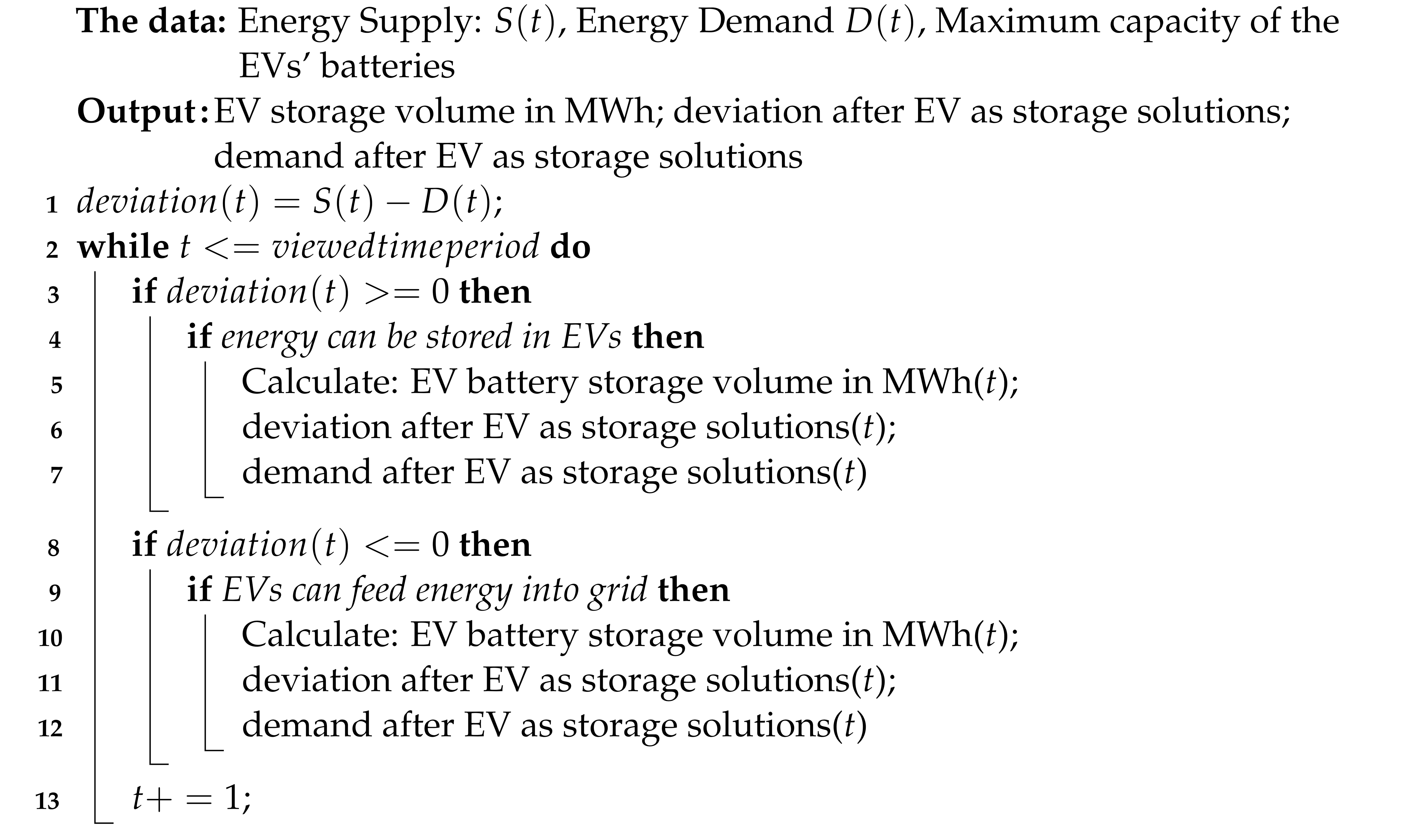 |
| Algorithm 5: AGVs as virtual buffer |
 |
5.2. Results
5.2.1. Impact of Electric Vehicles
5.2.2. Effects of Reefers
5.2.3. Effects of AGVs
5.2.4. Effects of Household Items
5.2.5. Combined Effects
5.2.6. Cost Analysis
6. Main Findings
7. Conclusions
Author Contributions
Funding
Data Availability Statement
Conflicts of Interest
| Abbreviations | |
| ACN Research Portal | Adaptive Charging Network Research Portal |
| AGV | Automated guided vehicle |
| C | storage capacity |
| CTA | Container Terminal Altenwerder |
| D(t) | Energy demand in t |
| EV | electric vehicle |
| GWh | Giga Watt hours |
| HHLA | Hamburger Hafen und Logistik AG |
| HVV | Hamburger Verkehrsbund |
| kw(h) | Kilo Watt (hours) |
| MW(h) | Mega Watt (hours) |
| OEDI | Open Energy Data Initiative |
| R² | Coefficient of determination |
| RE | Regenerative energy |
| reefer | Reefer container |
| RES | Regenerative energy source |
| S(t) | Energy supply in t |
| t | time (period) |
| V2G | Vehicle to Grid |
References
- Bundesministerium für Umwelt, Naturschutz und Nukleare Sicherheit. Klima—und Energiepolitik der Europäischen Union. 2021. Available online: https://www.bmu.de/themen/klima-energie/klimaschutz/eu-klimapolitik/ (accessed on 3 May 2021).
- Die Bundesregierung. Klimaschutzgesetz 2021—Generationenvertrag für das Klima. Available online: https://www.bundesregierung.de/breg-de/themen/klimaschutz/klimaschutzgesetz-2021-1913672 (accessed on 10 February 2021).
- Melhem, F.Y.; Moubayed, N.; Grunder, O. Residential energy management in smart grid considering renewable energy sources and vehicle-to-grid integration. Electr. Power Energy Conf. 2016, 1–6. [Google Scholar] [CrossRef]
- Shi, X.; Sun, W.; Voß, S.; Jin, J. Smart City: A Perspective of Emergency and Resilience at a Community Level in Shanghai. In ICCL 2020: Computational Logistics; Springer: Cham, Switzerland, 2020; Volume 12433, pp. 522–536. [Google Scholar] [CrossRef]
- Bundesregierung Deutschland. Ausstieg aus der Kernkraft. Available online: https://www.bundesregierung.de/breg-de/themen/energiewende/energie-erzeugen/ausstieg-aus-der-kernkraft-394280 (accessed on 15 May 2021).
- Bundesministerium für Umwelt, N.u.n.S. Fragen und Antworten zum Kohleausstieg in Deutschland. 2020. Available online: https://www.bmu.de/themen/klima-energie/klimaschutz/nationale-klimapolitik/fragen-und-antworten-zum-kohleausstieg-in-deutschland/ (accessed on 15 May 2021).
- Lamp, S.; Samano, M. Large-scale battery storage, short-term market outcomes, and arbitrage. Energy Econ. 2022, 107, 105786. [Google Scholar] [CrossRef]
- Vattenfall. Pumpspeicherkraftwerk Geesthacht Infotafel. Available online: https://de.wikipedia.org/wiki/Pumpspeicherkraftwerk_Geesthacht#/media/Datei:Pumpspeicherwerk_Geesthacht_Schautafel.jpg (accessed on 10 September 2023).
- Liu, J.; Zhang, W.; Zhou, R.; Zhong, J. Impacts of distributed renewable energy generations on smart grid operation and dispatch. IEEE Power Energy Soc. General Meet. 2012, 1–5. [Google Scholar] [CrossRef]
- Lund, P.; Mikkola, J.; Ypyä, J. Smart energy system design for large clean power schemes in urban areas. J. Clean. Prod. 2015, 103, 437–445. [Google Scholar] [CrossRef]
- Shen, J.; Jiang, C.; Li, B. Controllable Load Management Approaches in Smart Grids. Energies 2015, 8, 11187–11202. [Google Scholar] [CrossRef]
- Van Leeuwen, R.P.; de Wit, J.; Smit, G.J.M.; Smit, G.J.M. Review of urban energy transition in the Netherlands and the role of smart energy management. Energy Convers. Manag. 2017, 150, 941–948. [Google Scholar] [CrossRef]
- Yesilbudak, M.; Colak, A. Integration Challenges and Solutions for Renewable Energy Sources, Electric Vehicles and Demand-Side Initiatives in Smart Grids. IEEE Int. Conf. Renew. Energy Res. Appl. 2018, 7, 1407–1412. [Google Scholar] [CrossRef]
- Osorio, G.J.; Shafie-khah, M.; Lotfi, M.; Ferreira-Silva, B.J.M.; Catalao, J.P.S. Demand-Side Management of Smart Distribution Grids Incorporating Renewable Energy Sources. Energies 2019, 12, 143. [Google Scholar] [CrossRef]
- Cui, S.; Wang, Y.W.; Xiao, J.W. Peer-to-Peer Energy Sharing Among Smart Energy Buildings by Distributed Transaction. IEEE Trans. Smart Grid 2019, 10, 6491–6501. [Google Scholar] [CrossRef]
- O’Dwyer, E.; Pan, I.; Acha, S.; Shah, N. Smart energy systems for sustainable smart cities: Current developments, trends and future directions. App. Energy 2019, 237, 581–597. [Google Scholar] [CrossRef]
- Xu, Z.; Gao, Y.; Hussain, M.; Hussain, M.; Cheng, P. Demand Side Management for Smart Grid Based on Smart Home Appliances with Renewable Energy Sources and an Energy Storage System. Math. Probl. Eng. 2020, 2020. [Google Scholar] [CrossRef]
- De São José, D.; Faria, P.; Vale, Z. Smart energy community: A systematic review with metanalysis. Energy Strategy Rev. 2021, 100678. [Google Scholar] [CrossRef]
- Siemon, L.; Blume, C.; Mennenga, M.; Herrmann, C. Multi-scale Simulation for Energy Flexible Factories and Factory Networks: A System of Systems Perspective. Procedia CIRP. 2022, 105, 404–409. [Google Scholar] [CrossRef]
- Dehaghani, E.S.; Cipcigan, L.; Williamson, S.S. The Role of Electric Vehicles in Smart Grids. Lect. Notes Electr. Eng. 2022, 826, 123–151. [Google Scholar] [CrossRef]
- Bashiri khouzestani, L.; Sheikh-el-eslami, M.; Hosein Salemi, A.; Gerami moghadam, I. Virtual Smart Energy Hub: A Powerful Tool for Integrated Multi Energy Systems Operation. Soc. Sci. Res. Netw. 2022. [CrossRef]
- Stromnetz Hamburg. Energieportal Hamburg). 2020/2021. Available online: https://www.energieportal-hamburg.de/ (accessed on 18 May 2021).
- Statista. Einwohnerzahl der Bezirke in Hamburg im Jahr 2019). Available online: https://de.statista.com/statistik/daten/studie/1081561/umfrage/einwohnerzahl-in-hamburg-nach-bezirken/#professional (accessed on 18 May 2021).
- Copenhagen Cleantech Cluster. Denmark: A European smart grid hub: Asset mapping of smart grid competencies in Denmark. Available online: https://cdn.copcap.com/hubfs/Downloads/Dokumenter/Denmark_A_European_Smart_Grid_Hub_2011.pdf (accessed on 10 September 2023).
- ENTSO-E - Transparency Platform. Actual Generation per Production Type (Data of Germany, 2019-05.05.2021). Available online: https://transparency.entsoe.eu/dashboard/show (accessed on 17 May 2023).
- Melhem, F.Y.; Optimization Methods and Energy Management in “Smart Grids”. Electric Power. 2018, pp. 108–131. Available online: https://tel.archives-ouvertes.fr/tel-01876732/document (accessed on 10 September 2023).
- Shahan, Z. Tesla Megapack, Powerpack, & Powerwall Battery Storage Prices Per KWh — Exclusive. Available online: https://cleantechnica.com/2020/10/05/tesla-megapack-powerpack-powerwall-battery-storage-prices/ (accessed on 10 September 2023).
- Chandio, Y.; Mishra, A.; Seetharam, A. GridPeaks: Employing Distributed Energy Storage for Grid Peak Reduction. In Proceedings of the 2019 Tenth International Green and Sustainable Computing Conference (IGSC), Alexandria, VA, USA, 21–24 October 2019. [Google Scholar] [CrossRef]
- Feeley, C.; Bryans, A.G.; Nyamdash, B.; Denny, E.; O’Malley, M. The viability of balancing wind generation with storage. In Proceedings of the Power and Energy Society General Meeting - Conversion and Delivery of Electrical Energy in the 21st Century, Pittsburgh, PA, USA, 20–24 July 2008. [Google Scholar] [CrossRef]
- HafenCity Hamburg GmbH. HafenCity Smart Mobility Digital: Innovationsprojekt Carsharing und Elektromobilität für die Quartiere Baakenhafen und Elbbrücken, 2020. Available online: https://www.hafencity.com/_Resources/Persistent/8/f/2/7/8f277983d03f258c0e6e9729d27fc58d79c5faf7/200714%20HC%20Smart%20Mobility%20Digital.pdf (accessed on 9 October 2023).
- WEMAG AG. Stromverbrauch im 1, 2, 3 und 4 Personen Haushalt. 2020. Available online: https://www.wemag.com/energiesparberatung/stromverbrauch-single-2-3-4-personen-haushalt (accessed on 9 October 2023).
- CHECK24. Stromverbrauch: Durchschnittsverbrauch Strom. 2019. Available online: https://www.check24.de/strom/stromverbrauch/ (accessed on 8 October 2023).
- Wagener, L.; Weißbach, A. Stromverbrauch im Haushalt. Available online: https://www.co2online.de/energie-sparen/strom-sparen/strom-sparen-stromspartipps/stromverbrauch-im-haushalt/ (accessed on 9 October 2023).
- Minde, A. Household data. Available online: https://data.open-power-system-data.org/household_data/ (accessed on 9 October 2023).
- HafenCity Hamburg GmbH. Gebäude in der HafenCity. 2019. Available online: https://www.hafencity.com/_Resources/Persistent/e/1/a/b/e1abbff118d63750cfe3e9fe5122a2756b579bb3/190912%20HC%20Bauherrenbooklet_FREI.pdf (accessed on 23 August 2021).
- Wilson, E. Commercial and Residential Hourly Load Profiles for all TMY3 Locations in the United States. 2014. Available online: https://data.openei.org/submissions/153 (accessed on 9 October 2023).
- Nolzen, H. Handbuch des Geographieunterrichts. Bd. 12/2, Geozonen; Aulis Verlag in Friedrich Verlag GmbH: Hannover, Germany, 1996; ISBN 978-3-7614-1619-8. [Google Scholar]
- Fuchs, Bergmüller. Die Klimazonen der Erde. Available online: https://www.arcgis.com/apps/MapJournal/index.html?appid=e6dd27d56ba5478da908fa86feed2ab6 (accessed on 23 August 2023).
- Association for Computing Machinery. e-Energy ’19: Proceedings of the Tenth ACM International Conference on Future Energy Systems. 2019. Available online: https://dl.acm.org/doi/proceedings/10.1145/3307772 (accessed on 10 September 2023).
- Electric Vehicle Database. Useable Battery Capacity of Full Electric Vehicles. Available online: https://ev-database.org/cheatsheet/useable-battery-capacity-electric-car (accessed on 10 September 2023).
- Jahic, A.; Eskander, M.; Schulz, D. Charging Schedule for Load Peak Minimization on Large-Scale Electric Bus Depots. Appl. Sci. 2019, 9, 1748. [Google Scholar] [CrossRef]
- Dreier, D.; Rudin, B.; Howells, M. Comparison of management strategies for the charging schedule and all-electric operation of a plug-in hybrid-electric bi-articulated bus fleet. Public Transp. 2020, 12, 363–404. [Google Scholar] [CrossRef]
- Materne, P.; Hartwig, C.; Peters, U. HEAT as an example for efficient environmental perception for autonomous shuttle systems. In Automatisiertes Fahren 2021: Vom Assistierten Zum Autonomen Fahren 7; Springer Fachmedien Wiesbaden: Wiesbaden, Germany, 2021; pp. 1–16. [Google Scholar]
- hamburg.de. U4 – Elbbrücken Hamburgs neueste U-Bahn-Linie. Available online: https://www.hamburg.de/u4-hamburg/ (accessed on 30 August 2021).
- GoogleMaps. Hamburger Hochbahn—Plan der Linie U4. Available online: https://www.google.de/maps/@53.5405089,10.0067025,14.79z (accessed on 10 September 2021).
- HVV. Abfahrten. Available online: https://www.hvv.de/de/fahrplaene/abfahrten (accessed on 31 August 2021).
- Pineda-Jaramillo, J.D.; Salvador-Zuriaga, P.; Insa-Franco, R. Comparing energy consumption for rail transit routes through Symmetric Vertical Sinusoid Alignments (SVSA), and applying artificial neural networks. A case study of Metro Valencia (Spain). DYNA 2017, 84, 17–23. [Google Scholar] [CrossRef]
- Casals, M.; Gangolells, M.; Forcada, N.; Macarulla, M.; Giretti, A. A breakdown of energy consumption in an underground station. Energy Build. 2014, 78, 89–97. [Google Scholar] [CrossRef]
- gmp International GmbH. S- und U-Bahnstation Elbbrücken. 2019. Available online: https://www.gmp.de/de/projekte/3233/s-und-u-bahnstation-elbbrucken (accessed on 10 September 2021).
- Waterkant Touren. Eine Höhle der Moderne. Available online: https://www.waterkant-touren.com/eine-hoehle-der-moderne-u-bahn-hafencityuniversitaet/ (accessed on 10 September 2021).
- Cruise Gate Hamburg. Cruise Center HafenCity. Available online: https://www.cruisegate-hamburg.de/terminals/cruise-center-hafencity/ (accessed on 10 September 2021).
- Cruise Gate Hamburg. Terminals. Available online: https://www.cruisegate-hamburg.de/terminals/ (accessed on 10 September 2021).
- WorldWideWave. Landstrom in Hamburg Pflicht. Available online: https://worldwidewave.de/landstrom-wird-in-hamburg-pflicht (accessed on 10 September 2021).
- Josten, I. Anläufe—2019. Available online: https://www.schiffe-in-hamburg.de/de/_calls_2019.htm (accessed on 4 September 2021).
- Niss, M.K. GP-CMP-Shoreside-Report. 2015. Available online: https://www.danskehavne.dk/wp-content/uploads/2015/12/GP-CMP-Shoreside-Report.pdf (accessed on 10 September 2021).
- Hamburger Hafen und Logistik Aktiengesellschaft. HHLA Sustainability Report. 2019. Available online: https://hhla.de/fileadmin/download/nachhaltigkeit/HHLA_AR19_Sustainability-report.pdf (accessed on 10 September 2021).
- Guo, H.; Tao, L.; Moser, J.; Mueller, H. Smart Grids für zukünftige Häfen – Herausforderungen und Potenziale; VDE Verl. 2014. Available online: https://www.vde-verlag.de/proceedings-de/453641040.html (accessed on 10 September 2021).
- Yu, J.; Voß, S.; Song, X. Multi-objective optimization of daily use of shore side electricity integrated with quayside operation. J. Clean. Prod. 2022, 351, 131406. [Google Scholar] [CrossRef]
- Dutch daily news. Rotterdam is cool. Available online: https://www.dutchdailynews.com/rotterdam-is-cool/?__cf_chl_managed_tk__=pmd_otjBxxB.1NYZOrjXvToqL36l_0XPkec2lBpv9lZ58kc-1631786464-0-gqNtZGzNArujcnBszRLl (accessed on 16 September 2021).
- Verbeeck, J.; Kuijper, F. Application of Smart Energy Networks—Part I: Summary results of the individual company demand response audits in the Port of Antwerp. Available online: http://archive.northsearegion.eu/files/repository/20130409120201_WP3.5ApplicationofSmartEnergyNetworks-partI-Final-1.pdf (accessed on 6 September 2021).
- Hamburger Hafen und Logistik Aktiengesellschaft. Report Schiffsabfertigung: Segelliste. Available online: https://coast.hhla.de/report?id=Standard-Report-Segelliste (accessed on 7 September 2021).
- Hamburg Port Authority. Besserer Luft Landstrom im Hamburger Hafen. Available online: https://www.hamburg-port-authority.de/en/hpa-360/smartport/landstrom (accessed on 10 September 2023).
- Yu, J.; Cammin, P.; Voß, S. Allocation of Shore Side Electricity: The Case of the Port of Hamburg. In Lecture Notes in Computer Science; Springer: Cham, Switzerland, 2023. [Google Scholar] [CrossRef]
- Sáenz, J.G. Energy analysis and costs estimation of an On-shore Power Supply system in the Port of Gävle. Available online: https://www.diva-portal.org/smash/get/diva2:1333376/FULLTEXT01.pdf (accessed on 10 September 2023).
- Hamburger Hafen und Logistik Aktiengesellschaft. Weitere Stromtankstellen und Batterie-AGV am CTA. Available online: https://hhla.de/medien/pressemitteilungen/detailansicht/weitere-stromtankstellen-und-batterie-agv-am-cta (accessed on 10 September 2023).
- Husmann, O.; LI-ION powered AGV with automated quick charger. Konecranes, Tulsa, OK, USA. Personal Communication, 2021.
- Grundmeier, N. Simulationsbasierte Energiebedarfsprognose in Seehafen Containerterminals. 2016. Available online: https://uol.de/f/2/dept/informatik/grusim16.pdf (accessed on 10 September 2023).
- Hamburger Hafen und Logistik Aktiengesellschaft. HHLA leistet spürbaren Beitrag zur Energiewende. 2019. Available online: https://hhla.de/medien/pressemitteilungen/detailansicht/hhla-leistet-spuerbaren-beitrag-zur-energiewende (accessed on 10 September 2023).
- Louppova, J. HHLA to Use Green Energy for its AGVs. 2018. Available online: https://port.today/hhla-use-green-energy-agv/ (accessed on 10 September 2023).
- Ling, Q.; Hsu, W.J. Scheduling and Routing Algorithms for AGVs: A Survey. 1999. Available online: https://www.researchgate.net/publication/228891789_Scheduling_and_Routing_Algorithms_for_AGVs_a_Survey (accessed on 10 September 2023).
- Singh, N.; Dang, Q.V.; Akcay, A.; Adan, I.; Martagan, T. A matheuristic for AGV scheduling with battery constraints. Eur. J. Oper. Res. 2021, 298, 855–873. [Google Scholar] [CrossRef]
- Rüdenauer, I.; Eberle, U.; Grießhammer, R. Ökobilanz und Lebenszykluskostenrechnung Wäschewaschen; Technical report. 2006. Available online: https://www.oeko.de//oekodoc/289/2006-008-de.pdf (accessed on 10 September 2023).
- Stromauskunft. Stromverbrauch von Geschirrspülern. Available online: https://www.stromauskunft.de/stromverbrauch/stromverbrauch-von-geschirrspuelern/ (accessed on 17 August 2023).
- Kannengießer, C. Der Stromverbrauch einer Spülmaschine. 2020. Available online: https://www.net4energy.com/de-de/smart-living/stromverbrauch-spuelmaschine (accessed on 17 August 2021).
- Erneuerbare-Energien Verbraucherportal. Kosten von Windanlagen. Available online: http://www.solar-und-windenergie.de/windenergie/kosten-und-bau-windkraftanlagen.html (accessed on 10 September 2023).
- Adebayo, T.S.; Awosusi, A.A.; Oladipupo, S.D.; Agyekum, E.B.; Jayakumar, A.; Kumar, N.M. Dominance of Fossil Fuels in Japan’s National Energy Mix and Implications for Environmental Sustainability. Int. J. Environ. Res. Public Health 2021, 18, 7347. [Google Scholar] [CrossRef] [PubMed]
- Jovanovic, R.; Bousselham, A.; Voß, S. Partitioning of supply/demand graphs with capacity limitations: An ant colony approach. J. Comb. Optim. 2018, 35, 224–249. [Google Scholar] [CrossRef]

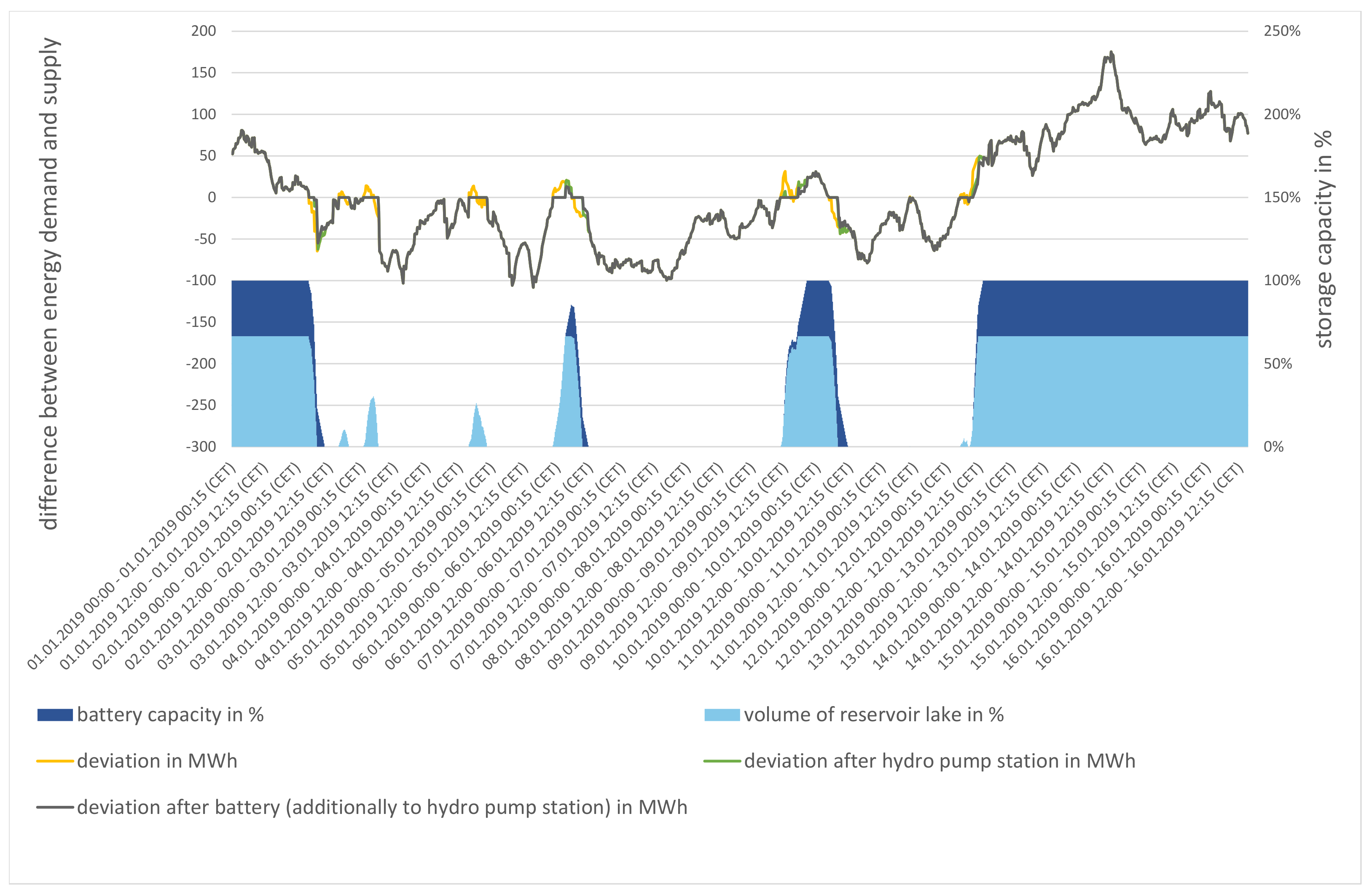

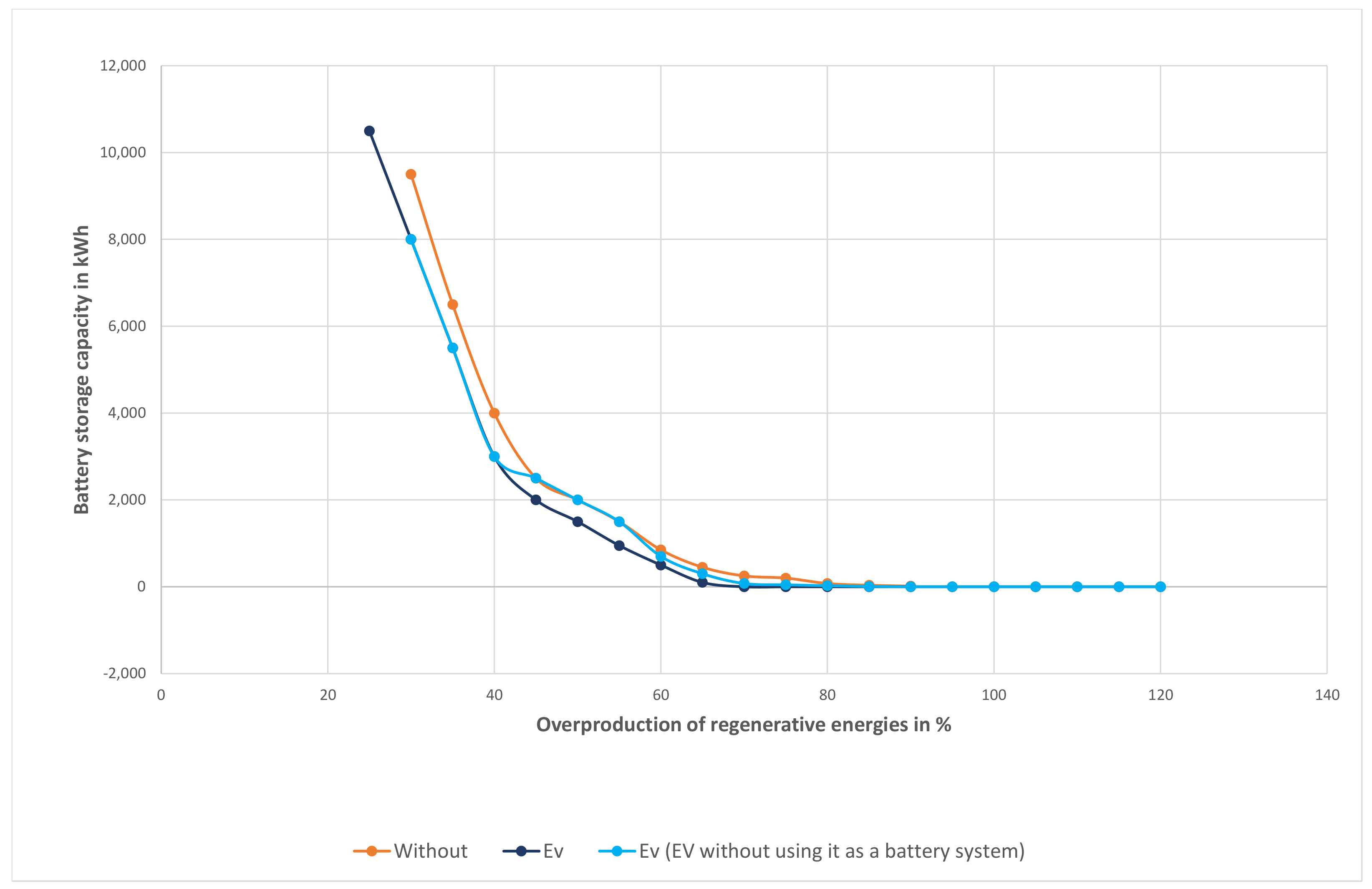

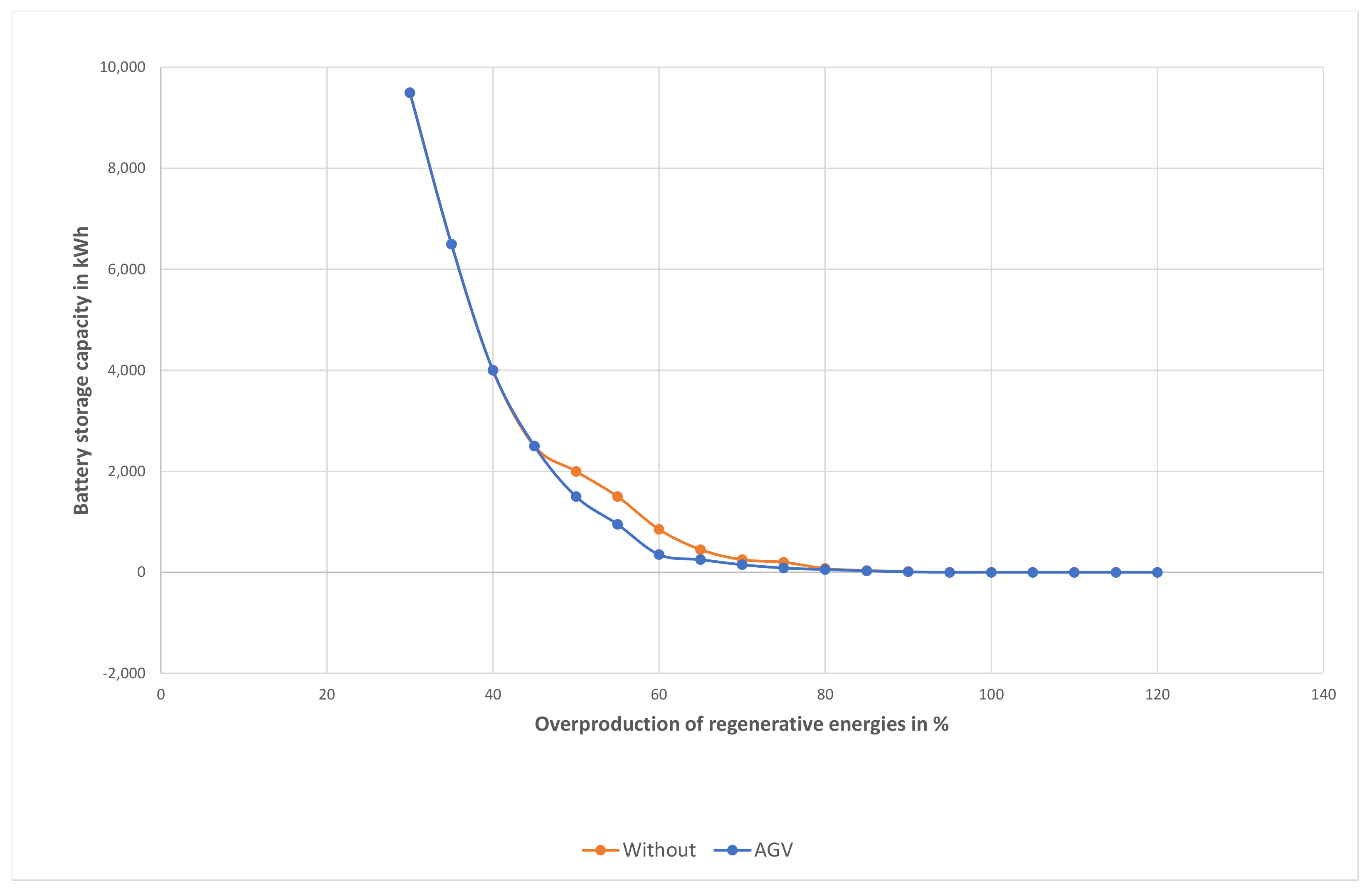
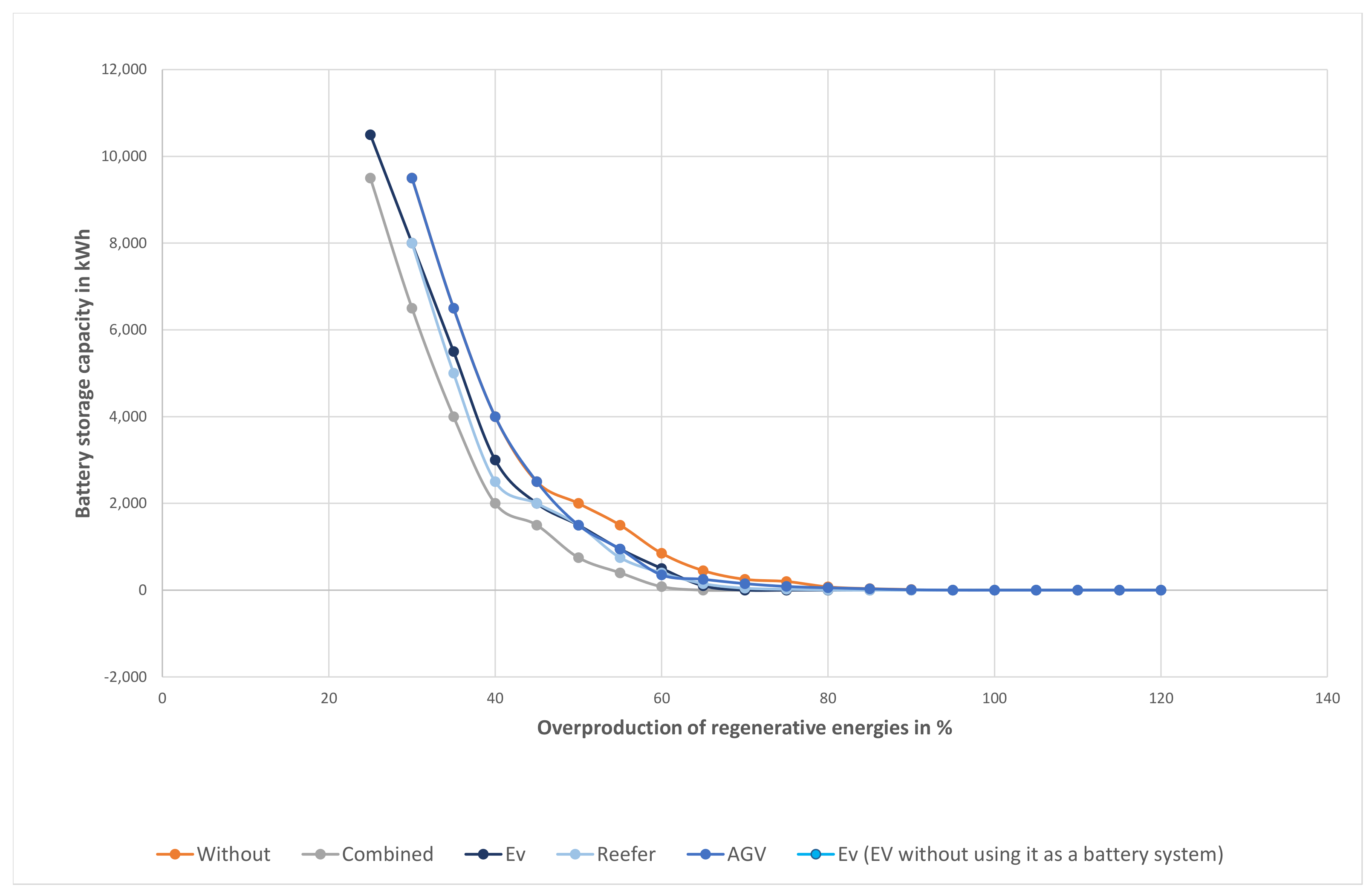
| Title | Authors | Year | Summary |
|---|---|---|---|
| Impacts of distributed renewable energy generations on smart grid operation and dispatch [9] | Jianing Liu, Weiqi Zhang, Rui Zhou, Jin Zhong | 2012 | The paper analyses the influence of distributed generations on power system dispatch, focusing on Guangdong’s power grid in China. Controllable distributed generations minimally affect dispatch, but high-penetration uncontrollable renewable energy generations can reshape modes and load forecasts. Frequency regulation and quick-response energy storage like pump storage are essential when extensively using distributed renewable energy. |
| Smart energy system design for large clean power schemes in urban areas [10] | Peter D. Lund, Jani Mikkola, Jenni Ypyä | 2014 | This paper explores urban renewable electricity integration in Delhi, Shanghai, and Helsinki. Findings suggest up to 20% yearly regenerative energy share without major adjustments, while advanced strategies like short-term storage could raise RE to 50–70% in Shanghai, 40–60% in Delhi, and 25–35% in Helsinki. As a second strategy, thermal conversion in Helsinki was proposed and could achieve 64% wind power use and 30% heat demand coverage. |
| Controllable load management approaches in smart grids [11] | Jingshuang Shen, Chuanwen Jiang, Bosong Li | 2015 | In this paper, several controllable load approaches and management strategies are reviewed in regard to renewable energy sources. It highlights the flexibility of broad controllable load management in smart grids. |
| Residential energy management in smart grid considering renewable energy sources and vehicle-to-grid integration [3] | Fady Y. Melhem, Nazih Moubayed, Olivier Grunder | 2016 | The paper proposes integrating renewable energy and electric vehicles into a smart grid. By using mixed integer linear programming, they show the benefits and importance of integrating EVs into a smart energy grid. |
| Review of urban energy transition in the Netherlands and the role of smart energy management [12] | Richard P. van Leeuwen, Jan B. de Wit, Gerald J.M. Smit | 2017 | This paper examines the Netherlands’ energy system. Highlighting the shift to renewable integration, it explores policies and complex energy balance. It shows the role of decreasing renewable costs, balanced policies, and growing sustainable investments in future smart energy grids. |
| Integration challenges and solutions for renewable energy sources, electric vehicles and demand-side initiatives in smart grids [13] | Mehmet Yesilbudak, Ayse Colak | 2018 | This literature review offers a compact overview of smart grids, their challenges, and solutions while integrating renewable energy sources, electric vehicles, and demand-side initiatives. The study identifies key research areas for further research, including energy distribution, stability analysis, battery tech, and demand response enhancements for effective integration in modern smart grids. |
| Demand-side management of smart distribution grids incorporating renewable energy sources [14] | Gerardo J. Osório, Miadreza Shafie-khah, Mohamed Lotfi, Bernardo J. M. Ferreira-Silva, João P. S. Catalão | 2019 | The paper introduces a two-stage stochastic model integrating renewable energy sources and demand-side management in distribution grids while reviewing several demand response aggregation strategies with the aim to minimize operating costs. This resulted in reduced peak demand and improved system reliability and efficiency. Therefore, load curtailment contracts and improved load shaping with load shaping contracts were used. |
| Peer-to-peer energy sharing among smart energy buildings by distributed transaction [15] | Shichang Cui, Yan-Wu Wang, Jiang-Wen Xiao | 2019 | This paper presents a distributed energy-sharing strategy for a smart energy-building cluster with renewable energies. It minimizes social energy costs through a two-stage strategy including minimizing the total social costs and a clearing game. An optimization model gets introduced to handle real-time uncertainties. The simulations result in more energy-efficient building clusters fostering sustainability. |
| Smart energy systems for sustainable smart cities: current developments, trends and future directions [16] | Edward O’Dwyer, Indranil Pan, Salvador Acha, Nilay Shah | 2019 | This paper surveys smart energy systems for Smart Cities. It highlights the role of computational intelligence in managing diverse energy technologies. It shows the challenges of a real-time framework and emphasizes the use of machine learning algorithms and computational intelligence. |
| Demand side management for smart grid based on smart home appliances with renewable energy sources and an energy storage system [17] | Zhihong Xu, Yan Gao, Muhammad Hussain, Panhong Cheng | 2020 | The paper addresses energy shortage and pollution issues, in traditional grids by proposing a demand-side management model for optimizing household appliance usage in smart grids. It proposes a demand-side model optimizing appliance schedules while considering renewable energy sources and energy storage systems to improve the total energy consumption. |
| Smart energy community: A systematic review with metanalysis [18] | Débora de São José, Pedro Faria, Zita Vale | 2021 | This literature review analyzes different energy community concepts. Therefore, synergistic enhancements in multi-purpose energy communities and energy islands for adaptable solutions are proposed. Benefits include CO reduction, efficiency gain, and higher self-sufficiency. |
| Multi-scale simulation for energy flexible factories and factory networks: A system of systems perspective [19] | Lukas Siemona, Christine Blume, Mark Mennenga, Christoph Herrmann | 2022 | This paper evaluates collaborative factory networks as systems of systems, by using a multi-scale simulation approach. It reveals a positive emergent behavior that benefits participating factories monetary and environmentally through on-site RE. |
| The role of electric vehicles in smart grids [20] | Ebrahim Saeidi Dehaghani, Liana Cipcigan, Sheldon S. Williamson | 2022 | The paper examines EVs’ potential for emissions reduction and efficiency gains. It discusses smart charging, V2G technology, and the need to address energy conversion inefficiencies for practical implementation. A virtual power plant is proposed for efficient EV charging, focusing on the shifting of the energy demand times of EVs. |
| Virtual smart energy hub: A powerful tool for integrated multi energy systems operation [21] | Leyla Bashiri Khouzestania, Mohammad Kazem Sheikh-El-Eslami, Amir Hosein Salemia Iman Gerami Moghaddam | 2022 | The paper presents a virtual smart energy hub, which combines smart energy grids, smart energy hubs, and virtual power plants to optimize profitability in energy markets. Using a risk-based model and the conditional value-at-risk index, it effectively manages uncertainties reduces risk costs, and enhances profits for a coalition of smart energy hubs. |
| Production Type | Average Supply per 15 min in MW | Standard Deviation in MW | Standard Deviation Proportional to the Average Supply |
|---|---|---|---|
| Biomass | 4642 | 211 | 0.048 |
| Fossil Brown Coal | 10,703 | 3766 | 0.352 |
| Fossil Gas | 6655 | 2624 | 0.39 |
| Fossil Hard Coal | 4795 | 3426 | 0.71 |
| Fossil Oil | 441 | 80 | 0.18 |
| Geothermal | 22 | 4 | 0.18 |
| Hydro Pump Storage | 1122 | 1395 | 1.24 |
| Hydro Pump Storage Consumption | 1280 | 1462 | 1.14 |
| Hydro run-of-river and poundage | 1606 | 259 | 0.16 |
| Hydro water reservoir | 136 | 99 | 0.73 |
| Nuclear Power | 7529 | 1211 | 0.16 |
| Other | 314 | 108 | 0.34 |
| Other renewable | 157 | 49 | 0.31 |
| Solar | 4902 | 7618 | 1.55 |
| Waste | 452 | 158 | 0.35 |
| Wind Offshore | 2943 | 1905 | 0.65 |
| Wind Onshore | 11,650 | 9045 | 0.78 |
| Without | EV | EV Without Using Batteries | |||||
|---|---|---|---|---|---|---|---|
| Overpro- duction in kW | Overpro- duction in % | Battery capacity in MWh | Costs in $ | Battery capacity in MWh | Costs in $ | Battery capacity in MWh | Costs in $ |
| 19,305.01931 | 25 | - | - | 10,500 | 3,166,409,226.4 | - | - |
| 23,166.02317 | 30 | 9500 | 2,869,691,120 | 8000 | 2,419,691,120 | 8000 | 2,419,691,120 |
| 27,027.02703 | 35 | 6500 | 1,972,972,973 | 5500 | 1,672,972,973 | 5500 | 1,672,972,973 |
| 30,888.03089 | 40 | 4000 | 1,226,254,826 | 3000 | 926,254,826 | 3000 | 926,254,826 |
| 34,749.03475 | 45 | 2500 | 779,536,680 | 2000 | 629,536,680 | 2500 | 779,536,680 |
| 38,610.03861 | 50 | 2000 | 632,818,533 | 1500 | 482,818,533 | 2000 | 632,818,533 |
| 42,471.04247 | 55 | 1500 | 486,100,386 | 950 | 321,100,386 | 1500 | 486,100,386 |
| 46,332.04633 | 60 | 850 | 294,382,239 | 500 | 189,382,239 | 700 | 249,382,239 |
| 50,193.05019 | 65 | 450 | 177,664,093 | 100 | 72,664,093 | 300 | 132,664,093 |
| 54,054.05405 | 70 | 250 | 120,945,946 | 0 | 45,945,945.9 | 75 | 68,445,945.9 |
| 57,915.05792 | 75 | 200 | 109,227,799 | 0 | 49,227,799.2 | 45 | 62,727,799.2 |
| 61,776.06178 | 80 | 75 | 75,009,652.5 | 0 | 52,509,652.5 | 40 | 64,509,652.5 |
| 65,637.06564 | 85 | 35 | 66,291,505.8 | 0 | 55,791,505.8 | 25 | 63,291,505.8 |
| 69,498.0695 | 90 | 15 | 63,573,359.1 | 0 | 59,073,359.1 | 7 | 61,173,359.1 |
| 73,359.07336 | 95 | 0 | 62,355,212.4 | 0 | 62,355,212.4 | 0 | 62,355,212.4 |
| 77,220.07722 | 100 | 0 | 65,637,065.6 | 0 | 65,637,065.6 | 0 | 65,637,065.6 |
| 81,081.08108 | 105 | 0 | 68,918,918.9 | 0 | 68,918,918.9 | 0 | 68,918,918.9 |
| 84,942.08494 | 110 | 0 | 72,200,772.2 | 0 | 72,200,772.2 | 0 | 72,200,772.2 |
| 88,803.0888 | 115 | 0 | 75,482,625.5 | 0 | 75,482,625.5 | 0 | 75,4826,25.5 |
| 92,664.09266 | 120 | 0 | 78,764,478.8 | 0 | 78,764,478.8 | 0 | 78,764,478.8 |
| Reefer | AGV | Household | Combined | |||||
|---|---|---|---|---|---|---|---|---|
| Overpro- duction in % | Battery capacity in MWh | Costs in $ | Battery capacity in MWh | Costs in $ | Battery capacity in MWh | Costs in $ | Battery capacity in MWh | Costs in $ |
| 25.00 | - | - | - | - | - | - | 9,5000 | 2,866,409,266.4 |
| 30.00 | 8000 | 2,419,691,119.7 | 9500 | 2,869,691,119.7 | 9500 | 2,869,691,119.7 | 6500 | 1,969,691,119.7 |
| 35.00 | 5000 | 1,522,972,973.0 | 6500 | 1,972,972,973.0 | 6500 | 1,972,972,973.0 | 4000 | 1,222,972,973.0 |
| 40.00 | 2500 | 776,254,826.2 | 4000 | 1,226,254,826.3 | 4000 | 1,226,254,826.3 | 2000 | 626,254,826.3 |
| 45.00 | 2000 | 629,536,679.5 | 2500 | 779,536,679.5 | 2500 | 779,536,679.5 | 1500 | 479,536,679.5 |
| 50.00 | 1500 | 482,818,532.8 | 1500 | 482,818,532.8 | 2000 | 632,818,532.8 | 750 | 257,818,532.8 |
| 55.00 | 750 | 261,100,386.1 | 950 | 321,100,386.1 | 1500 | 486,100,386.1 | 400 | 156,100,386.1 |
| 60.00 | 400 | 159,382,239.4 | 350 | 144,382,239.4 | 850 | 294,382,239.4 | 80 | 63,382,239.4 |
| 65.00 | 150 | 87,664,092.7 | 250 | 117,664,092.7 | 450 | 177,664,092.7 | 0 | 42,664,092.7 |
| 70.00 | 45 | 59,445,946.0 | 150 | 90,945,946.0 | 250 | 120,945,946.0 | 0 | 45,945,946.0 |
| 75.00 | 20 | 55,227,799.2 | 85 | 74,727,799.2 | 200 | 109,227,799.2 | 0 | 49,227,799.2 |
| 80.00 | 4 | 53,709,652.5 | 55 | 69,009,652.5 | 75 | 75,009,652.5 | 0 | 52,509,652.5 |
| 85.00 | 0 | 55,791,505.8 | 30 | 64,791,505.8 | 35 | 66,291,505.8 | 0 | 55,791,505.8 |
| 90.00 | 0 | 59,073,359.1 | 9.5 | 61,923,359.1 | 15 | 63,573,359.1 | 0 | 59,073,359.1 |
| 95.00 | 0 | 62,355,212.4 | 0 | 62,355,212.4 | 0 | 62,355,212.4 | 0 | 62,355,212.4 |
| 100.00 | 0 | 65,637,065.6 | 0 | 65,637,065.6 | 0 | 65,637,065.6 | 0 | 65,637,065.6 |
| 105.00 | 0 | 68,918,918.9 | 0 | 68,918,918.9 | 0 | 68,918,918.9 | 0 | 68,918,918.9 |
| 110.00 | 0 | 72,200,772.2 | 0 | 72,200,772.2 | 0 | 72,200,772.2 | 0 | 72,200,772.2 |
| 115.00 | 0 | 75,482,625.5 | 0 | 75,482,625.5 | 0 | 75,482,625.5 | 0 | 75,482,625.5 |
| 120.00 | 0 | 78,764,478.8 | 0 | 78,764,478.8 | 0 | 78,764,478.8 | 0 | 78,764,478.8 |
Disclaimer/Publisher’s Note: The statements, opinions and data contained in all publications are solely those of the individual author(s) and contributor(s) and not of MDPI and/or the editor(s). MDPI and/or the editor(s) disclaim responsibility for any injury to people or property resulting from any ideas, methods, instructions or products referred to in the content. |
© 2023 by the authors. Licensee MDPI, Basel, Switzerland. This article is an open access article distributed under the terms and conditions of the Creative Commons Attribution (CC BY) license (https://creativecommons.org/licenses/by/4.0/).
Share and Cite
Bouchard, P.; Voß, S.; Heilig, L.; Shi, X. A Case Study on Smart Grid Technologies with Renewable Energy for Central Parts of Hamburg. Sustainability 2023, 15, 15834. https://doi.org/10.3390/su152215834
Bouchard P, Voß S, Heilig L, Shi X. A Case Study on Smart Grid Technologies with Renewable Energy for Central Parts of Hamburg. Sustainability. 2023; 15(22):15834. https://doi.org/10.3390/su152215834
Chicago/Turabian StyleBouchard, Pierre, Stefan Voß, Leonard Heilig, and Xiaoning Shi. 2023. "A Case Study on Smart Grid Technologies with Renewable Energy for Central Parts of Hamburg" Sustainability 15, no. 22: 15834. https://doi.org/10.3390/su152215834
APA StyleBouchard, P., Voß, S., Heilig, L., & Shi, X. (2023). A Case Study on Smart Grid Technologies with Renewable Energy for Central Parts of Hamburg. Sustainability, 15(22), 15834. https://doi.org/10.3390/su152215834






